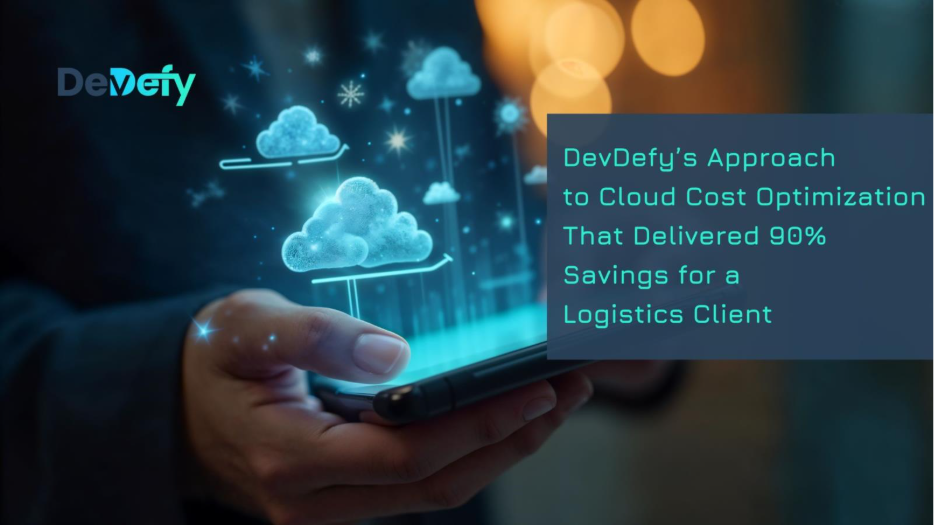
Cloud costs often grow quietly in the background, until one day, they explode. That’s exactly what happened to one of our logistics clients, whose monthly cloud bill had soared to $7,378.10 by the fall of 2022.
The company had ambitious goals and an expanding product roadmap. But with that growth came complex infrastructure, overlapping workloads, and runaway compute costs.
That’s when DevDefy stepped in.
Within months, cloud chaos turned into clarity. By fall 2025, their monthly cloud cost stood at $745, a 90% decrease, despite the platform being larger, faster, and more feature-rich than ever.
Here’s how we did it: through disciplined engineering, deep assessment, and smart cloud cost optimization strategies that turned waste into efficiency.
Before diving into the transformation, let’s define the core of what we do best: cloud cost optimization.
Cloud cost optimization is the process of maximizing business value per dollar spent in the cloud. It goes beyond shutting down idle instances, it’s about aligning architecture, performance, and cost with business goals.
At DevDefy, our cloud cost optimization services are designed around three principles:
You can’t optimize what you can’t see.
Cost efficiency should be a shared goal across engineering, product, and finance.
Optimization that breaks under growth isn’t optimization, it’s a patch.
With those principles, we began the journey to transform a struggling infrastructure into a sustainable, cost-efficient ecosystem.
By late 2022, the logistics company’s multi-cloud setup, running across AWS and Google Cloud was becoming unsustainable.
They faced:

Their monthly cloud bill hit $7,378.10, with no clear path to containment.
The business didn’t just need savings, it needed a cost-conscious architecture that could evolve as they grew.
Before making any changes, our first priority was to understand where costs were coming from.
We conducted a thorough cloud assessment, examining:
Through this assessment, we uncovered multiple areas where resources were being overused, processes were redundant, and cloud spend was higher than necessary without yet touching any configuration.
We identified where resources were being wasted and aligned compute power with actual demand. By adjusting services and scaling dynamically based on real usage, we eliminated idle resources and prevented surprise bills.
Impact: Major savings on computing resources without compromising performance.
Instead of paying full price for everything, we balanced long-term and short-term pricing models. This ensured predictable costs for regular workloads and savings for temporary or bursty workloads.
Impact: Some workloads saw over 40% lower costs.
Old or rarely used data can quietly eat up money. We moved it to more affordable storage layers and automated cleanup of unnecessary files.
Impact: Hands-free, ongoing savings on storage.
Some automated tasks and functions were costing more than they should. We analyzed them closely and restructured the most expensive ones for efficiency.
Impact: Reduced waste without compromising performance.
We minimized costly cross-region data transfers and consolidated overlapping services into shared environments.
Impact: Lower network charges, faster performance, and better resource utilization.
We built cost visibility into deployments and integrated efficiency checks into the development process. Every new feature is reviewed not only for performance but also for its cost impact.
Impact: Teams make smarter, cost-conscious decisions automatically.
Instead of waiting for the monthly bill, we set up real-time alerts to catch unusual spending patterns.
Impact: Issues are caught early, before they become expensive problems.
Total Monthly Cloud Cost: $7,378.10
$2,906.52 (AWS)
$4,471.57 (GCP)
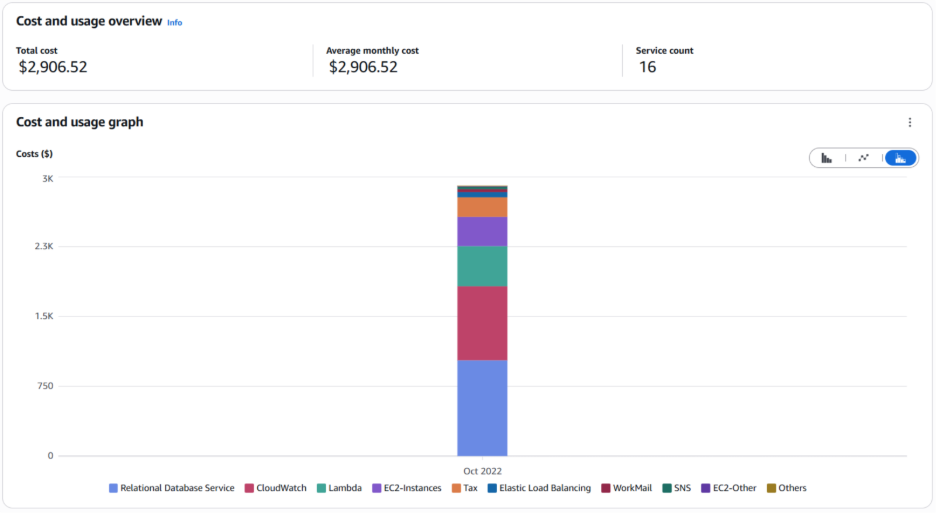
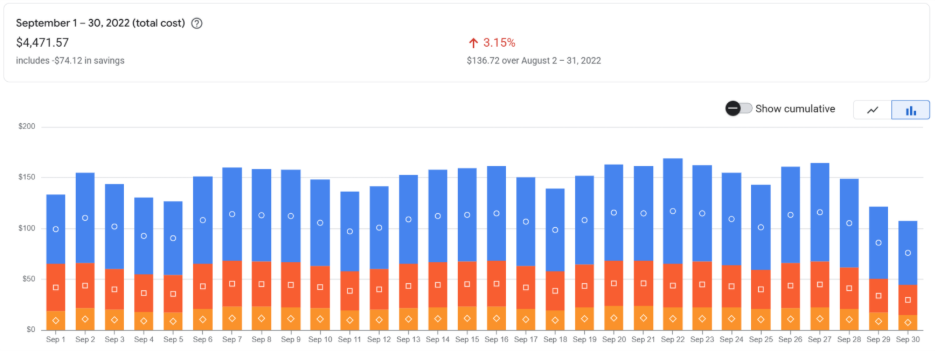
Total Monthly Cloud Cost: $745
$405.67 (AWS)
$339.33 (GCP)
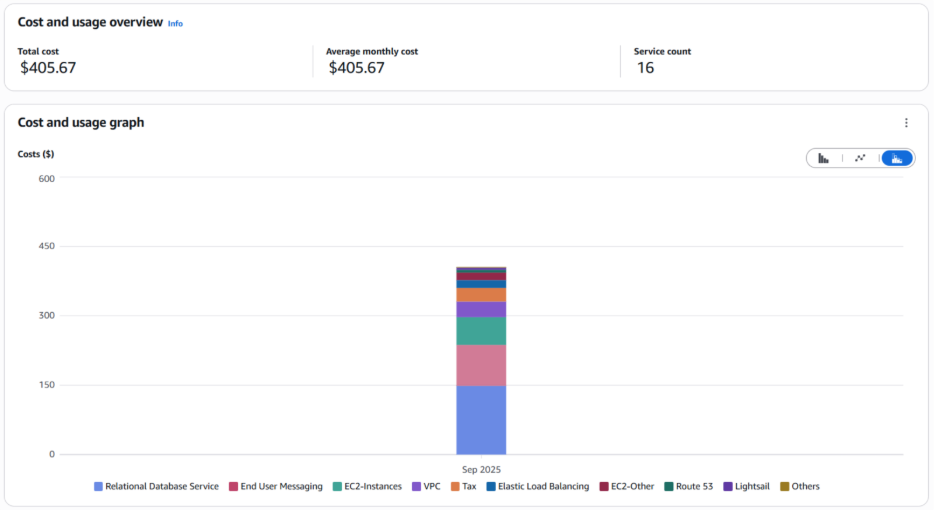
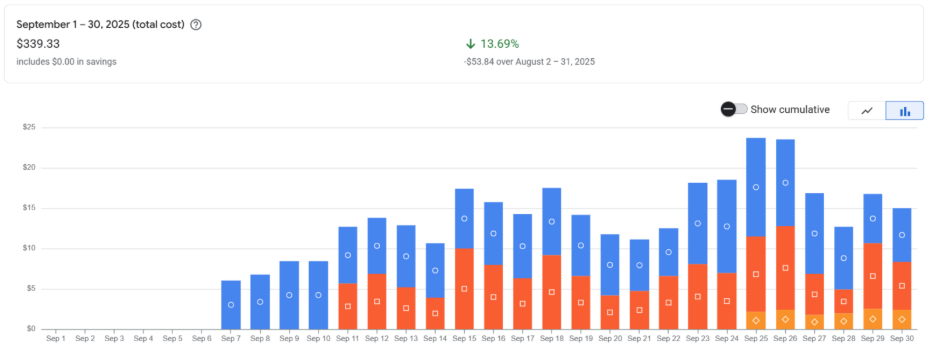
Even as new features, integrations, and APIs rolled out, our cloud cost optimization solutions kept expenses stable, without sacrificing performance or uptime.
True cloud cost management and optimization isn’t just about reducing today’s bill, it’s about ensuring future efficiency.
Our logistics client now has:
True cloud cost management and optimizationThis transformation is proof that smart engineering + strategic insight = exponential value. n’t just about reducing today’s bill, it’s about ensuring future efficiency.
Our logistics client now has:
At DevDefy, cloud cost optimization isn’t a one-time fix, it’s a philosophy.
We help businesses go beyond savings, designing cloud ecosystems that are lean, scalable, and intelligent by default.
If you’re ready to unlock performance, efficiency, and growth, Schedule a FREE Cloud Cost Audit with DevDefy today.
Because when it comes to cloud cost optimization, we don’t just reduce, we redefine.
